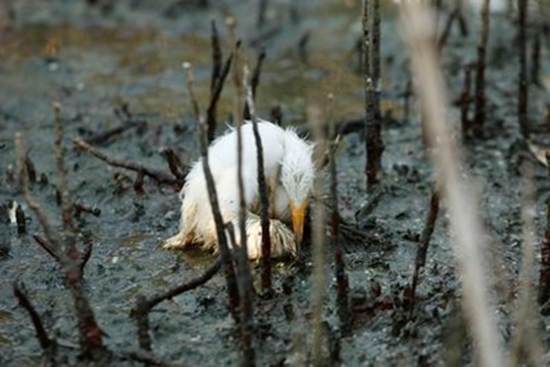Over 300 dead birds are likely Gulf spill victims
LOS ANGELES (Reuters) – More than 300 sea birds, the bulk of them brown pelicans and northern gannets, have been found dead along the U.S. Gulf Coast during the first five weeks of BP’s huge oil spill off Louisiana, wildlife officials reported on Monday. The 316 birds found dead along the coasts of Louisiana, Mississippi, Alabama and Florida — plus 10 others that died or were euthanized at wildlife rehabilitation centers after they were captured alive, far outnumber the 31 surviving birds found oiled to date. The raw tally of birds listed by the U.S. Fish and Wildlife Service as dead on arrival at wildlife collection facilities include specimens obviously tainted with oil and some with no visible signs of oil contamination. But all are being counted as potential casualties of the oil gushing since April 20 from a ruptured wellhead on the floor of the Gulf because of their proximity in time and space to the spill, said Jay Holcomb, who directs a rescue center for birds in Fort Jackson, Louisiana. The specimens eventually will be analyzed to determine more conclusively if the birds were contaminated with oil from the BP spill, he said. Holcomb, director of the California-based International Bird Rescue Research Center, said mortality for sea birds, many of them in the midst of their breeding season, is expected to climb sharply, especially if hurricanes move into the region and sweep more oil ashore. “The potential for this being catastrophic is right there because there’s a massive amount of oil in the water, and it’s still pouring out, and there’s a lot of nesting birds and a lot of birds using the coast,” he told Reuters. “If the tropical storms take that oil and move it, that’s when you’re going to see the real impact, I think.” The birds known to be hardest hit by oil in the Gulf so far are those that feed by diving into the water for fish, including the brown pelican, removed last year from the endangered species list, and the northern gannet, Holcomb said. …
